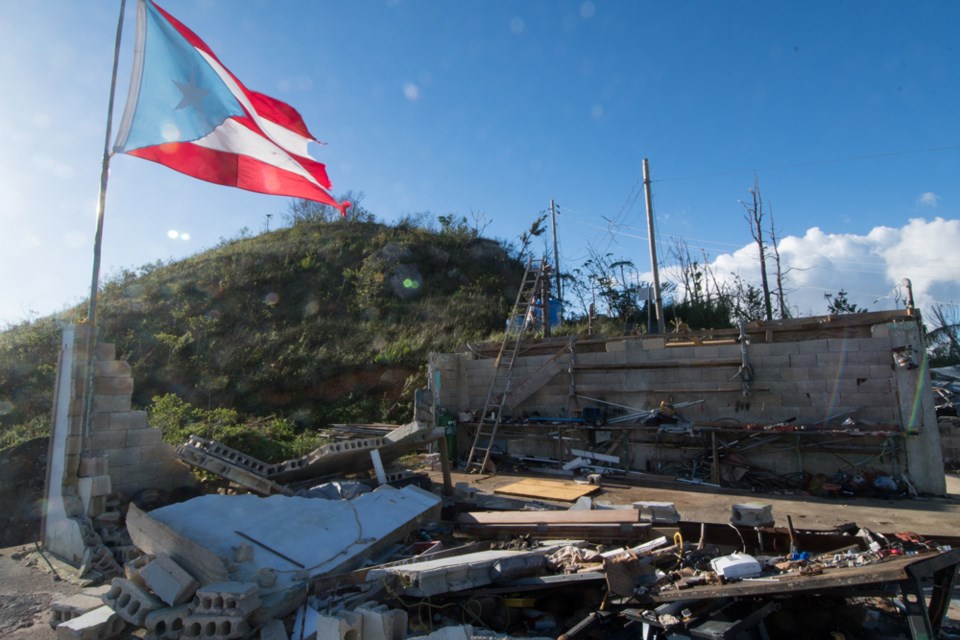This month I find myself in Puerto Rico. I’d never thought of coming to this island just east of the Dominican Republic, but I was in Costco in the ketchup aisle when my phone rang and I was asked to deploy for a disaster team already on site responding to the fifth-strongest storm to ever hit the U.S. That storm hit more than two months ago. The TV cameras are gone, but people are still without power. Remember Mr. Trump causing a stir by throwing paper towels? About 24 hours after the call, I was on a plane headed south.
The island was hit by a double whammy of hurricane Irma then hurricane Maria. Irma was bad, Maria was worse—a category 5 hurricane, the highest level and the worst to hit this island. It carved mercilessly across the coffee growing mountains. Flying over in a helicopter one sees formerly lush green forests that have been twisted and stripped bare of leaves. Most cities and all rural mountain towns were pushed into the dark ages as Maria finished the destruction started by Irma—ripping and twisting electric high-tension towers into pretzels. Industry stopped, homes went dark, streetlights and stoplights went black. They are mostly dark today even though Maria left on Sept 20.
The response teams are distributing water filters, food, generators, shelter and medical assistance. Many will not get power restored until June, for some in the mountains, it could take up to a year. Those who need to keep medicine cold (such as insulin) have to line up every three days for six hours or more for a cooler of ice. There is no place I’ve been on the island where I haven’t seen roofs ripped off buildings or power lines piled in tangled heaps by the side of the road. The country is at 50 percent generating capacity—but then you have to get that power to the people. That’s another story. I speak to some who have mostly given up. “Electricity will come when it comes,” they tell me in Spanish.
Puerto Ricans are typically warm Latinos—no doubt being islanders helps them to join hands. They are rightfully proud of their tiny rugged land. On Sunday, to thank us for helping, a church in the mountains invited us to attend their service and enjoy a traditional meal. Since their roof had been ripped off they worshipped in a building next door.
The service reflected their energetic culture, starting with a Katy Perry song sung with Spanish spiritual lyrics. They hugged, clapped and swayed together in unison as though they were in a musical on Broadway. The minister spoke about hope—a challenging topic, I thought, for a place in need of food, water, electricity and a roof. I should think hope is in short supply. “We can live with less food, water and electricity but we cannot live without hope,” the preacher said.
Somewhere between the hand clapping, swaying and hugging going on around me I felt humbled, honoured to share this moment with these good mountain people. I was touched that folks who had not seen much help or modern conveniences for two months could find hope. It occurred to me that hope is one of those things that must be created from within. Remember that Bible story about manna coming from heaven when you need it. Hope is like that, you can’t store it. It is when we are in the midst of adversity that hope is generated. It fuels us to go on. It comes when we need it if we let it. For these folks, their hope comes from God.
I’m inclined to agree, whether in a disaster like in Puerto Rico or heading off to work. These days hope seems to be in short supply. Disasters aside, the world is a confusing place for many with all that is going on out there. Maybe like the mountain pastor we need to think about what could be rather than what is. Dream a little and turn to faith to make the world a better place.
Here’s hoping.
